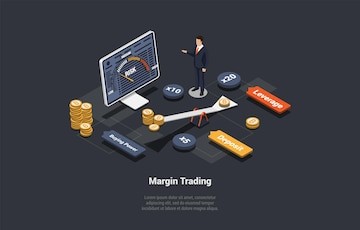In the fast-paced world of finance, trading on news and events has emerged as a dynamic and strategic approach to profit from market volatility. The key concepts and techniques of trading on news and events, provide valuable insights for traders looking to capitalize on breaking news, economic events, and other developments in the financial world.
Definition of Trading on News and Events
Trading on news and events, often referred to as event-driven trading, is a strategy that involves making investment decisions based on information and events that impact financial markets. These events can include earnings reports, economic data releases, political developments, and more. Traders analyze these events to predict market movements and make informed trades.
This approach to trading is deeply rooted in the idea that market reactions to news and events are not always immediate or rational. The impact of a significant event may take time to fully play out in the market. Therefore, event-driven traders strive to capitalize on the discrepancies between the initial market response and the eventual equilibrium, which may present unique profit opportunities.
Importance of Staying Informed
To succeed in trading news and events, staying well-informed is paramount, especially during trading hours. Access to accurate and timely information is a key driver of profitability. Traders need to monitor news sources, economic calendars, and market analysis to identify potential trading opportunities.
In today’s digital age, the availability of information is vast, with a multitude of resources at a trader’s fingertips. Staying informed involves keeping a vigilant eye on news outlets, both mainstream and specialized financial news websites, to capture critical developments that could influence the market.
Traders often subscribe to news services that offer real-time updates and analysis on economic indicators, corporate earnings, geopolitical events, and more.
Economic calendars, a staple tool for event-driven traders, provide schedules of upcoming economic releases, central bank announcements, and other significant events. Traders can plan their strategies and positions around these dates to maximize their potential gains or minimize their risk exposure.
These calendars offer insights into when and how economic data releases can affect currency, stock, or commodity markets, enabling traders to make informed decisions ahead of time.
Market analysis plays a fundamental role in staying informed as well. Regularly assessing market trends, sentiment, and technical indicators can provide valuable insights into the current state of the market. Chart analysis, for instance, can help traders identify key support and resistance levels, aiding in the determination of entry and exit points for trades.
Trading Strategies
Event-driven trading can take various forms, and each strategy has its advantages and risks. Here are some common trading strategies:
Long-term vs. Short-term Trading
Long-term traders focus on larger trends, while short-term traders seek to profit from shorter market movements. The choice between these strategies depends on your risk tolerance and trading style. Long-term trading is often less intensive and suitable for those with a higher risk tolerance and a patient investment horizon.
In contrast, short-term trading demands a more active approach, catering to traders who prefer quick, frequent trades and have a lower risk threshold. Your selection between these strategies should align with your personal financial goals, time commitment, and risk management preferences.
Breakout Trading
Breakout traders look for price movements that break through key support or resistance levels. This strategy aims to capture significant price shifts following a breakout. Breakouts can signal the emergence of new trends or the continuation of existing ones. Traders use technical analysis to identify potential breakout points and set entry and exit levels to capitalize on these anticipated price movements. Successful breakout trading relies on precise timing and effective risk management strategies.
Trend Following
Trend-following strategies involve identifying and capitalizing on market trends. Traders use technical indicators to determine the direction of a trend and place trades accordingly. It is based on the belief that markets exhibit prolonged trends, and traders aim to ride these trends to profit. Identifying the right indicators and interpreting them accurately is crucial for effective trend-following.
Successful trend traders often employ tools like moving averages, relative strength indicators, and trendlines to confirm and reinforce their trading decisions, allowing them to navigate changing market conditions with greater precision and confidence.
News-Driven Strategies
News-driven techniques revolve around reacting to significant news and event announcements. Traders analyze the potential impact of news on the market and enter positions accordingly.
These methods require a keen understanding of the relationship between news and market sentiment, as well as the ability to act swiftly in response to breaking developments. Effective news-driven traders often employ risk management techniques to protect their positions from unexpected market volatility, ensuring that they are well-prepared to capitalize on opportunities and mitigate risks associated with market-moving news events.
Final Words
Trading on news and events is a dynamic strategy for profiting from market volatility. Event-driven trading hinges on analyzing significant information and occurrences that influence financial markets, such as earnings reports, economic data releases, and political developments.
This approach capitalizes on the market’s delayed and often irrational reactions to the news, creating opportunities for traders. To excel in this field, staying well-informed is essential.
Traders must access reliable news sources, economic calendars, and market analyses to spot trading prospects. The digital age offers a wealth of resources, including real-time news services and economic calendars, aiding traders in planning their strategies. Market analysis helps traders gauge market sentiment and trends, using indicators and chart analysis to make informed decisions.
Article Provided





































